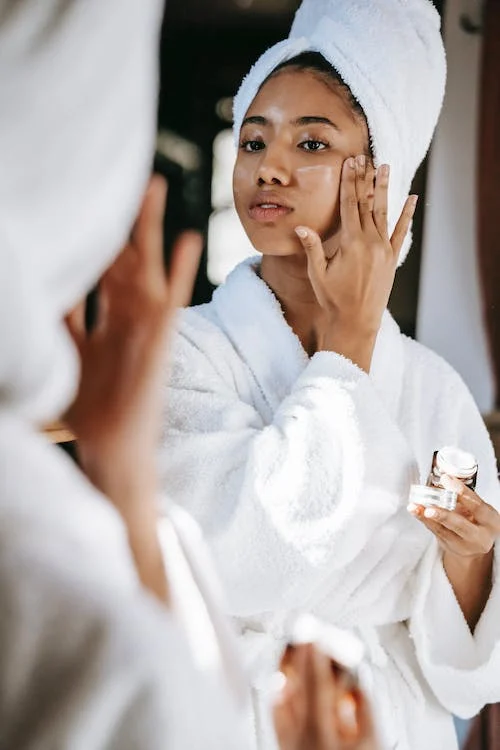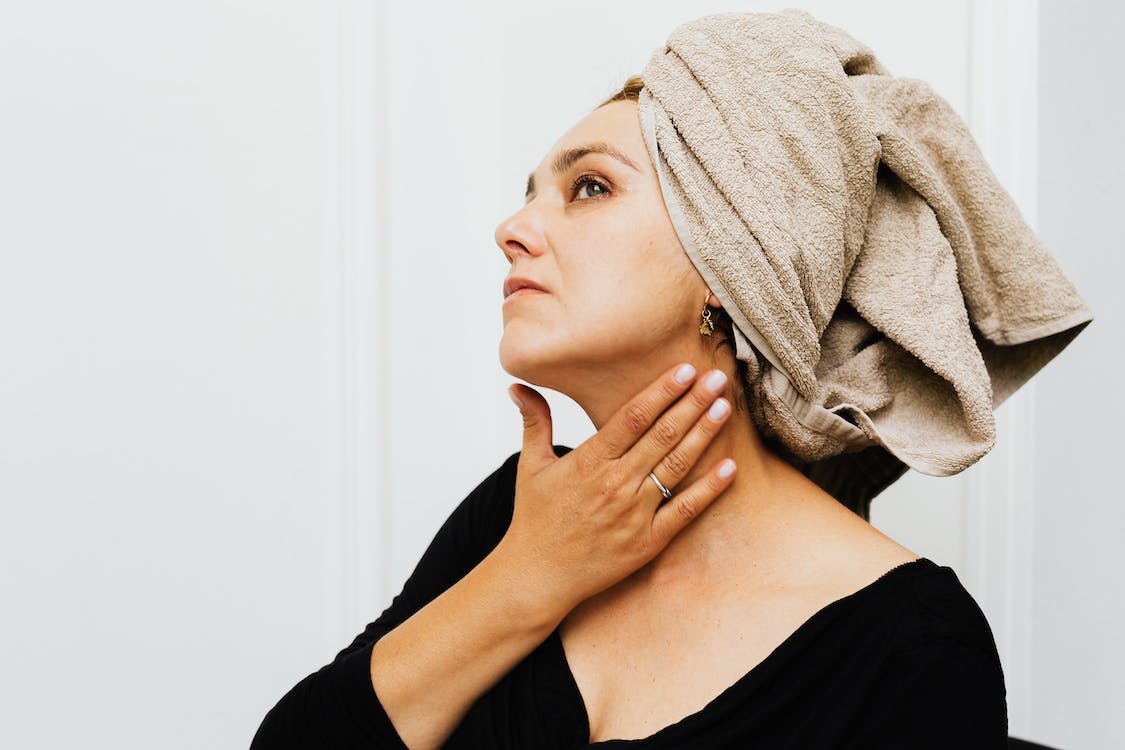Moisturizing is an essential step in any skincare routine, yet many people tend to neglect it or skip it altogether. Properly moisturized skin is not only more hydrated and nourished, but it also appears smoother, brighter, and healthier. Failing to moisturize can lead to a host of skin problems, such as itchiness, irritation, dryness, and premature aging.
However, while many people understand the importance of moisturizing, they often make common mistakes that can undermine its effectiveness. For instance, using the wrong type of moisturizer for their skin type, applying too much or too little, or not applying it frequently enough are all common mistakes.
Let’s delve into the importance of moisturizing and discuss the most common mistakes people make when moisturizing. By understanding these mistakes, you can optimize your moisturizing routine and achieve healthier, more radiant skin.
Over-Moisturizing
Over-moisturizing occurs when the skin is subjected to excessive amounts of moisture, leading to a range of undesirable outcomes.
Clogged Pores: Over-moisturizing can clog the pores, leading to breakouts and acne. The excess moisture can trap dirt, dead skin cells, and bacteria, which can build up in the pores, leading to inflammation and breakouts.
Disrupts Natural Moisture Balance: When you over-moisturize, you can disrupt the skin’s natural moisture balance. This can lead to the skin becoming dependent on external moisture, causing it to stop producing its natural oils, which can lead to dryness and even more significant problems like eczema.
Increases Risk of Fungal Infections: Excessive moisture can create a breeding ground for fungi, leading to fungal infections. This is particularly true in warm and humid climates where fungi thrive. Besides, it can happen to people who have other types of skin infections as well.
Causes Skin Irritation: Over-moisturizing can cause skin irritation, including redness, itching, and burning. This is especially true if the moisturizer contains fragrances or other ingredients that are known to irritate the skin. This problem is particularly noticed in people who have sensitive skin.
Signs of Over-Moisturizing
The great news is that your skin actually gives you signals to help you recognize whether you’re over-moisturizing or not! Pay attention to these tell-tale signs, and you’ll know whether you’re giving your skin too much of an otherwise good thing.
| Signs of Over-Moisturizing | How it Affects the Skin |
| Oily Skin | Excess moisture can accumulate on the surface of the skin, resulting in a greasy or oily appearance. |
| Breakouts | The surplus moisture can obstruct pores, leading to the accumulation of dirt, bacteria, and dead skin cells, which can cause breakouts and acne. |
| Itching and Irritation | Over-moisturizing can cause skin irritation, resulting in symptoms such as itching, redness, and burning. |
| Sticky or Tacky Skin | The additional moisture may not be fully absorbed into the skin, resulting in a sticky or tacky sensation on the skin’s surface. It’s as if your skin feels greasy. |
Not Choosing the Right Moisturizer
As every individual has a different skin type, the type of moisturizer that suits one person may not be ideal for another. The type of moisturizer depends on the skin type of the individual. Using the wrong type of moisturizer can lead to unwanted outcomes such as breakouts, irritation, or dryness. There are also different types of prescribed drugs in the USA that can be used for overcoming skin problems like dryness and irritation.
Below is an elucidation on the importance of selecting appropriate moisturizers for different skin types, along with some helpful tips to assist you in choosing the perfect moisturizer for your skin type.
Dry Skin: Individuals with dry skin should opt for moisturizers that contain rich, nourishing ingredients such as glycerin, hyaluronic acid, or shea butter. These ingredients help to hydrate and soothe the skin, making it feel less tight and itchy.
Oily Skin: People with oily skin should opt for lightweight, non-comedogenic moisturizers. A non-comedogenic moisturizer helps to prevent the pores from becoming clogged, which can lead to breakouts. Gel or water-based moisturizers are ideal for oily skin types.
Combination Skin: Combination skin requires a moisturizer that can provide hydration to dry areas while being lightweight enough to avoid making oily areas worse. Try to look for moisturizers that are oil-free and light in texture.
Sensitive Skin: People with sensitive skin should avoid moisturizers that contain fragrances or other irritants. Instead, they should look for moisturizers that contain soothing ingredients such as aloe vera or chamomile.
Tips for Choosing the Right Moisturizer
Let’s explore the realm of skincare and unveil key tips for selecting the ideal moisturizer for your skin.
Determine your skin type – Determining your skin type will help you narrow down the choices to those that are most suitable for your skin. A trip to the dermatologist will be useful in case you have combination skin.
Look for specific ingredients – Look for ingredients that cater to your specific skin types, such as hyaluronic acid for dry skin, or niacinamide for oily skin.
Consider the texture – A heavy moisturizer may be too much for oily skin, while a lightweight moisturizer may not be hydrating enough for dry skin.
Patch Test – Always patch-test a new moisturizer before applying it to your face. Apply a small amount to your inner arm and wait for 24 hours to see if any reactions occur.
Not Applying Moisturizer on Damp Skin
One common mistake that people make when moisturizing their skin is not applying the moisturizer on damp skin. Water is essential for the skin to effectively absorb the moisturizer, and applying it on damp skin helps to seal in the moisture, but many people think otherwise. Applying moisturizer on damp skin can be beneficial in improving its absorption for a few reasons.
Firstly, damp skin is more permeable than dry skin. The moisturizer can penetrate the skin’s surface layer more easily, allowing it to absorb deeper into the skin. This means that the skin is more likely to retain moisture and receive the full benefits of a moisturizer.
Secondly, moisturizer applied to damp skin can help to lock in moisture more effectively. The moisturizer traps the moisture on the skin’s surface, creating a barrier that helps to prevent water loss. This can be particularly helpful in dry or low-humidity environments, where the skin is more prone to dehydration.
Lastly, applying moisturizer to damp skin can also make the skin feel more hydrated and plump. As the moisturizer is absorbed into the skin, it can help boost hydration levels, making the skin look and feel healthier and more supple.
Tips for Ensuring Skin Is Damp Before Applying Moisturizer
You can give the following suggestions a try if you want to have a more radiant and healthier complexion.
Cleanse Your Skin
Before moisturizing, it’s important to cleanse your skin thoroughly to remove any dirt, oil, and makeup that may be present on your skin. This will also help to prepare your skin for better absorption of the moisturizer.
Handy Tip: Use a gentle cleanser that is appropriate for your skin type.
Use a Toner
Using a toner can help to balance the pH level of your skin and prepare it for moisturizing. Look for a toner that is alcohol-free and has hydrating ingredients like glycerin or aloe vera.
Handy Tip: Apply toner with a cotton pad to ensure even distribution.
Splash Your Face with Water
After cleansing and toning, splash your face with water to ensure that your skin is damp before applying the moisturizer. Avoid using hot water, which can strip your skin of its natural oils and cause dryness.
Handy Tip: Pat your face dry with a clean towel, leaving some moisture on the skin.
Use a Facial Mist
Another option is to use a facial mist to hydrate your skin before applying moisturizer. Look for a mist that contains hydrating ingredients like rosewater or hyaluronic acid.
Handy Tip: Hold the mist bottle at arm’s length from your face and spritz evenly.
Apply Moisturizer While the Skin is Still Damp
Apply moisturizer while your skin is still slightly damp to help lock in the moisture. Start by applying a small amount of moisturizer to your fingertips and then gently massage it into your skin using upward, circular motions.
Handy Tip: Choose a moisturizer that is suitable for your skin type and contains ingredients like ceramides or hyaluronic acid for optimal hydration.
Skipping The Neck and Chest
Some people tend to neglect the neck and chest area. These areas are just as important as the face and can show signs of aging and dryness if not properly hydrated. The neck and chest are important areas to moisturize because they are often exposed to the sun and environmental stressors, such as pollution, which can lead to dryness, wrinkles, and uneven skin tone.
Additionally, these areas tend to have thinner skin and fewer oil glands compared to other parts of the body, making them more susceptible to dehydration and premature aging.
Properly moisturizing the neck and chest can help maintain the skin’s natural moisture barrier, which can prevent dryness and flakiness. It can also help to improve the skin’s elasticity, firmness, and texture, reducing the appearance of fine lines, wrinkles, and discoloration.
Tips for Properly Moisturizing the Neck and Chest
By following these below-mentioned tips, you can keep your neck and chest area looking healthy, hydrated, and youthful.
Neck/Chest Moisturizer – Choose a moisturizer that is specifically formulated for the neck and chest area. Try to find products that contain ingredients such as hyaluronic acid, glycerin, and ceramides, which help to hydrate and protect the skin.
Circular Massage – Apply the moisturizer in an upward motion, using gentle circular motions to massage it into the skin. Be sure to cover the entire neck and chest area, including the decolletage. Male skin also has hair on skin so be gentle to avoid pain.
SPF Moisturizer – Use a moisturizer with SPF during the day to protect the skin from sun damage.
Neck/ Chest Exfoliation – Exfoliate the neck and chest area once or twice a week to remove dead skin cells and help the moisturizer penetrate deeper into the skin.
Gentle Cleansing – Avoid using harsh soaps or cleansers that can strip the skin of its natural oils, which can lead to dryness and irritation.
Hydration & Nutrition – Drink plenty of water and eat a healthy diet to support overall skin health.
Use of Serum – Consider using a serum or treatment in addition to your moisturizer to target specific skin concerns, such as dark spots or uneven skin tone.
Using Too Much or Too Little Moisturizer
Moisturizing your skin in an unbalanced way can lead to various issues. When you apply too much moisturizer, it can create a barrier on your skin that prevents it from breathing properly, which can cause clogged pores and breakouts. This is particularly true for those with oily or acne-prone skin.
Over-moisturizing can also cause your skin to become excessively oily, making it difficult to apply makeup or maintain a fresh appearance throughout the day. Additionally, if you’re using a moisturizer that’s too heavy for your skin type, it can lead to the appearance of fine lines and wrinkles.
Not using enough moisturizer can also cause problems. If your skin is dry, it can become rough, scaly, and itchy. This can be particularly problematic during the colder months when the air is drier. When your skin is dry, it’s also more susceptible to wrinkles and fine lines. In extreme cases, your skin may even crack and bleed.
Therefore, it is important to use the right amount of moisturizer for your skin type and to adjust the amount as needed based on changes in the weather or other factors that may affect the skin’s hydration levels.
Tips for Finding the Right Amount of Moisturizer to Use
Here are some tips for choosing the right quantity of moisturizer to maintain hydrated, radiant skin.
Tip |
Why is it Important? |
| Start with a small amount | It will prevent over-moisturizing and clogged pores |
| Consider your skin type | It will prevent under-moisturizing and dry, itchy skin |
| Pay attention to how your skin feels | It will keep you comfortable and also keep the skin balanced |
| Look for signs of over-moisturizing | It will help in preventing premature aging |
| Don’t forget about sunscreen | It will ensure proper sun protection |
Conclusion
Proper moisturizing is crucial for maintaining healthy and hydrated skin. However, there are common moisturizing mistakes that many people make. These include using the wrong type of moisturizer, not applying enough, applying too much, and neglecting to moisturize certain areas of the body.
To avoid these mistakes, it’s important to choose a moisturizer that is suitable for your skin type, apply it consistently and evenly, and make sure to moisturize all parts of the body that need it, especially parts that are exposed to external environment. With these tips in mind, you can achieve optimal skin hydration and maintain a healthy, glowing skin.






